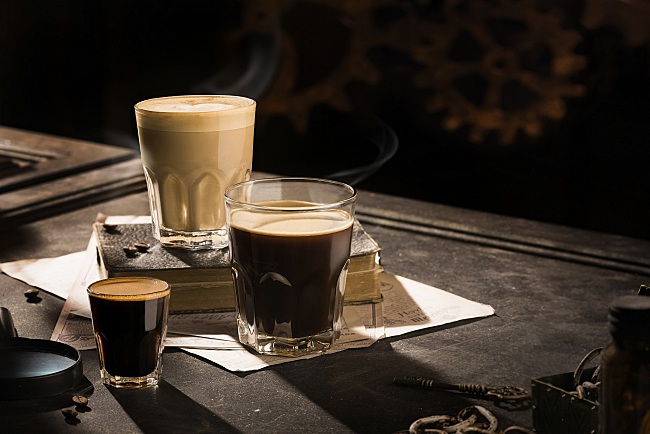The New Wave of Choosing SOE Single Origin Espresso at Home
The New Wave of Choosing SOE Single Origin Espresso at Home
Blog Article
Understanding Coffee Beans: the Trip From Coffee to Blended Coffee Beans

The Beginnings of Coffee: A Worldwide Perspective
While you may believe of coffee as a modern staple, its origins map back centuries, intertwining with societies throughout the world. The tale begins in Ethiopia, where tale states a goat herder called Kaldi uncovered the energizing impacts of coffee beans after discovering his goats romping energetically after consuming them.
As profession courses expanded, coffee made its means to Europe in the 17th century, promptly getting popularity. It transformed from a mystical drink right into a daily ritual, intellectual exchanges and motivating gatherings. Each culture added its distinct twist to coffee preparation, enhancing its history. This global journey highlights how coffee attaches us, going beyond boundaries and unifying diverse customs with a basic bean.
Farming and Harvesting of Espresso Beans
As coffee's trip advanced, the emphasis moved to the farming and harvesting of certain bean selections, specifically those utilized for coffee. You'll discover that espresso beans often come from Arabica or Robusta plants, each offering distinctive flavors. The excellent expanding conditions consist of high elevations and rich, well-drained dirt, which enhance the beans' quality.
During the harvest, selecting techniques vary. In some regions, workers hand-pick ripe cherries, guaranteeing just the very best fruit goes to processing. In other locations, mechanical harvesters are used, particularly on bigger farms. Timing is crucial; you want to harvest when the cherries get to peak perfection for maximum flavor.
When harvested, the beans are gotten ready for handling, which is necessary in establishing their last taste. Understanding the growing and collecting procedures offers you insight into what enters into your favorite espresso, improving your gratitude for each and every mug.
Processing Techniques: From Cherry to Bean
Since you've learnt more about harvesting espresso beans, let's discover how those cherries transform right into the coffee beans you like. You'll see just how different harvesting strategies impact flavor, complied with by the important steps of fermentation and drying out. We'll break down the milling and grading process that identifies your coffee's top quality.
Harvesting Strategies Clarified
When it comes to coffee, comprehending harvesting methods is important, given that they straight impact the taste and high quality of the beans you delight in. There are two primary methods: selective picking and strip picking. Selective picking involves hand-picking just ripe cherries, guaranteeing you get the very best high quality beans. This method often leads to a richer flavor account, though it's even more labor-intensive. On the various other hand, strip choosing means gathering all cherries at as soon as, despite ripeness. While it's quicker and less expensive, this can lead to a mix of tastes, influencing the final item. Eventually, the choice of collecting method can considerably influence your coffee experience, so it's worth recognizing exactly how those beans made it to your cup.
Fermentation and Drying
After harvesting, the following action in handling coffee beans play a considerable role fit their flavor. You'll locate that fermentation is important, as it aids break down the mucilage surrounding the beans, improving their preference account. Relying on the approach, this procedure can last from a few hours to numerous days, with varying results based upon temperature and humidity.
When fermentation is complete, drying follows, which is equally vital. You can select from sun-drying or mechanical drying methods. Sun-drying allows the beans to soak up tastes from the environment, while mechanical drying out assurances regular moisture levels despite weather condition. Proper drying is important to stop mold and preserve the beans' top quality, ultimately influencing your cup of coffee.
Milling and Grading Process
As fermentation and drying out established the stage for taste development, the milling and grading procedure warranties that just the finest coffee beans make it to your cup. This phase includes removing the outer layers of the coffee cherry, including the parchment and husk. Top quality beans receive a greater grade, resulting in a richer coffee experience.
Roasting Techniques: Unlocking Flavor Potential
When you roast coffee beans, the technique you select can significantly impact the taste profile. Comprehending the partnership in between time, temperature, and toasting methods is crucial to exposing the potential of your brew. Allow's check out exactly how these components come together to develop the excellent mug.
Toasting Methods Clarified
While you could believe that all coffee toasting techniques generate the very same outcomes, the reality is that each technique reveals special taste possibilities in the beans. Drum roasting makes use of a turning drum to uniformly disperse warmth, boosting caramelization and creating a well balanced taste. Air roasting, on the other hand, distributes hot air around the beans, promoting a lighter roast with noticable acidity.

Influence On Taste Account
Various look at these guys toasting approaches not just affect the process but likewise substantially influence the taste account of the coffee beans. Dark roasts, on the various other hand, bring out vibrant, great smoky tastes, often concealing the bean's one-of-a-kind qualities. Recognizing these subtleties assists you appreciate the creativity behind your mug of coffee, boosting your overall experience with every sip.
Time and Temperature Factors
To release the full taste possibility of coffee beans, both time and temperature level throughout the toasting procedure play considerable functions. When roasting, you'll find that higher temperature levels can quickly develop flavors, yet if you rush it, you might wind up with scorched notes. Conversely, reduced temperature levels permit a more steady flavor growth, showcasing the beans' one-of-a-kind qualities.

Timing is simply as essential; prolonging the roast as well long can bring about a loss of acidity and brightness, while too brief a roast could leave the beans underdeveloped. Finding that pleasant spot requires method and testing. By changing these factors, you can expose the rich, intricate tastes hidden within each bean, creating an absolutely remarkable coffee experience.
The Art of Mixing: Crafting One-of-a-kind Coffee Profiles

Beginning by selecting a base coffee that provides a strong structure. Pick corresponding beans to enhance details flavor notes. A brilliant Ethiopian bean can bring fruitiness, while a rich Brazilian coffee includes body. Testing is vital-- don't be worried to readjust proportions up until you locate your perfect profile.
As you blend, remember that each combination tells a tale. You're not simply making coffee; you're creating an experience. So, take your time, preference frequently, and delight in the journey of finding your signature mix.
Brewing Methods: Exactly How Prep Work Affects Flavor
Blending coffee opens up a domain of taste opportunities, but how you brew that blend can considerably influence your final cup. Different developing methods remove special flavors and scents, so it's crucial to select intelligently. For instance, a French press allows sediments and oils to stay, creating an abundant, robust experience. On the other hand, a pour-over highlights the coffee's clarity and illumination, perfect for showcasing delicate notes.
Coffee, with its high stress, generates a focused shot that accentuates sweet taste and crema. If you like a lighter mixture, take into consideration a cool mixture method; look at here now it yields a smooth, much less acidic taste.
Readjusting variables like water temperature, grind dimension, and make time can transform your coffee's account. Accept the art of developing to uncover the tastes hidden in your coffee blends.
The Future of Coffee: Sustainability and Development
As the coffee market advances, sustainability and technology are ending up being crucial for resolving ecological difficulties and conference consumer demands. You'll observe that more coffee companies are embracing green methods, from sourcing beans fairly to executing sustainable farming techniques. These shifts not only assist the earth however also boost the quality of the coffee you take pleasure in.
You might see advancements like biodegradable packaging and water-saving developing approaches that minimize waste. Advanced modern technology, such as blockchain, is also coming to be preferred, guaranteeing transparency in the supply chain, which enables you to map your coffee back to its origins.
On top of that, purchasing regional areas and supporting farmers with reasonable profession initiatives cultivates an extra lasting coffee ecosystem. As you sip your next cup, keep in mind that your selections can add to a brighter future for coffee. By choosing sustainable brand names, you're not simply delighting in a beverage; you're making a positive effect on the globe.
Often Asked Inquiries
What Is the Difference In Between Arabica and Robusta Beans?
Arabica beans are smoother, sweeter, and have a greater acidity, while robusta beans are stronger, a lot dig this more bitter, and contain more caffeine. You'll discover these differences in taste and fragrance when making your coffee.
Exactly How Does Elevation Affect Coffee Bean Taste?
Elevation influences coffee bean taste substantially. Higher altitudes produce beans with brighter level of acidity and complex flavors, while lower elevations commonly generate beans that are heavier and much less nuanced. You'll discover these differences in your cup!
What Are the Health And Wellness Perks of Drinking Coffee?
Consuming alcohol coffee can boost your power, enhance mental focus, and even improve physical efficiency. It's abundant in anti-oxidants, might decrease the risk of certain illness, and can promote a much healthier metabolic process when eaten in small amounts.
Can Coffee Beans Be Reused for Developing?
Yes, you can reuse coffee beans for brewing, yet the taste might be weak. If you appreciate experimenting, attempt reusing them in different methods, like cool mixtures or contributing to shakes for an additional kick.
Just how Should I Store Coffee Beans for Freshness?
To maintain your coffee beans fresh, save them in an impermeable container in a great, dark place. Stay clear of exposing them to light, heat, or wetness, as these aspects can promptly deteriorate their flavor and fragrance.
Recognizing Coffee Beans: the Trip From Espresso to Blended Coffee Beans.
Now that you've discovered about collecting espresso beans, let's discover exactly how those cherries transform into the coffee beans you like.When you roast coffee beans, the approach you choose can dramatically affect the flavor profile - Single Origin Espresso.While you may assume that all coffee roasting techniques produce the exact same outcomes, the truth is that each technique discloses unique flavor possibilities in the beans.Various toasting techniques not only influence the process yet additionally significantly impact the taste account of the coffee beans
Report this page